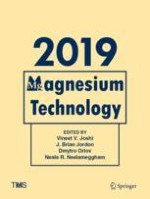2019 | OriginalPaper | Buchkapitel
First-Principles Investigation of the Effect of Solutes on the Ideal Shear Resistance and Electronic Properties of Magnesium
verfasst von : P. Garg, I. Adlakha, K. N. Solanki
Erschienen in: Magnesium Technology 2019
Aktivieren Sie unsere intelligente Suche, um passende Fachinhalte oder Patente zu finden.
Wählen Sie Textabschnitte aus um mit Künstlicher Intelligenz passenden Patente zu finden. powered by
Markieren Sie Textabschnitte, um KI-gestützt weitere passende Inhalte zu finden. powered by
